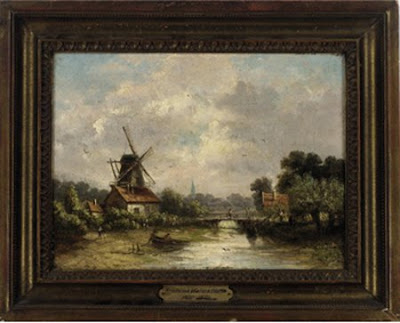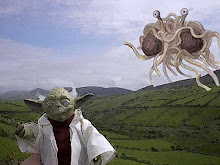"He was a walking gazetteer," a Landmarks Committee member of Manhattan's Community Board 8, Barry Schneider, said. A co-chair of Defenders of the Historic Upper East Side, Elizabeth Ashby, said, "You couldn't mention an address that he wouldn't have known who had ever lived there and what had ever had happened there. Crimes, adultery, elopements, who ran off with the butler, he knew it all."
Kingsland's wry smile and store of knowledge was well known among the Upper East Side historic preservationists, art gallerists, and the employees of New York auction houses. In summer, he wore a plastic visor that made him look somewhat like an old time card shark; while in winter, he usually wore a scarf and beret. He served as a public member for the Landmarks Committee of Community Board 8.
Wearing a creased blue blazer over a white Oxford shirt, Kingsland had a slightly anachronistic way of dressing and always seemed just a little misplaced in time. It was as if he were just a little out of synchronization with the world. "The thing about Kingsland," author Barnaby Conrad III said, "was that he was slightly annoyed that the 20th century had occurred."
At Landmarks meetings, Kingsland would cross his legs, lean back in his chair, and take everything in. "He spoke in a very considered manner and hit the nail on the head," said Teri Slater, who recruited him as a public member for the Landmarks Committee.
A Landmarks Committee co-chair, Margery Perlmutter, recalled the time someone at a meeting showed a photo of simply a doorway. Astonishingly, Kingsland identified its street address. He knew prices of townhouses, exteriors of buildings, and types of renovation styles by architect and even the history of window changes on buildings. He collected landmarks violations and reported them.
He had an encyclopedic knowledge of the minutiae of the lives in Upper East Side buildings over generations - the sort of background elements animating novels by Henry James or Edith Wharton. "When you have enough of that information accumulated," David Redden said, "it's no longer trivia. You can make connections and suddenly it gains significance."
Mr. Redden, who as a young cataloger at an auction house first met Kingsland in the 1970s, said Kingsland's knowledge evoked a "shadow of another world." He knew whose ancestors had been beer or steel barons or who had been an original partner in Standard Oil.
Mr. Kingsland was also a volunteer at the New York office of the American Academy in Rome, and was a volunteer room-sitter at the American Hospital of Paris Foundation designer show house.
But it was with the New York Marble Cemetery, that he likely made his greatest contribution by researching and piecing together connections between cemetery vault purchasers and their living descendants. A trustee of the cemetery would research the family genealogies, mostly from the 19th century, and pass the information to Kingsland who would carry on the research, usually at the New York Society Library.
He mailed detailed genealogies to Ms. Anne Brown, the trustee, who later learned that Kingsland was able to discuss a few thousand descendants from memory as he did not save copies for himself. "If we had all the money in the world, we couldn't have hired someone to do what he did," she said. "You couldn't design someone with his knowledge and interests. His expertise and the cemetery's needs were a perfect fit."
Mr. Kingsland would often stop friends on the sidewalk to visit and seemed to have all day to talk. He did not appear to have to be anywhere unless he decided to be there. He had leisure to deliver correspondence personally, too.
A frugal man, he recycled envelopes. He favored Gilbert and Sullivan, and could play classical music at sight. He liked puns: When a woman at a St. James Church fair exclaimed, "Look at the fuschia!" Kingsland retorted, "I prefer the past myself."
A proprietor of Jennings and Rohn Antiques, Fritz Rohn, recalled years ago playing a game with Kingsland. They would match the faces of passers-by, on the street, with Old Master painters likely to have painted them.
Kingsland worked at Vito Giallo Antiques on Madison Avenue three days a week from 1986 to 1991. Singer Elton John was so enchanted with Kingsland that he left a blank check for him to fill out for 19th-century statues. Andy Warhol befriended Kingsland for a time. At lunchtime, frugal Mr. Kingsland would usually eat two jars of Gerber baby food.
A longtime preservationist, Tony Wood, said there was an "air of delightful mystery around him." Though he said he had attended Groton, the school has no record of him. The earliest record of him identified in New York is a letter he wrote to the New York Times as a teenager in the summer of 1961 about the Elgin Marbles. (You do know what the Elgin Marbles are... Don't you?)
There are records that he attended the University of Vermont in 1964. In the late 1960s, Kingsland conducted research for Henry Hope Reed's walking tours, particularly on the genealogy of New York families. It was around that time that a New York real estate attorney, Spencer Compton, and realist painter Joseph Keiffer both met him while volunteering for Eugene Mc-Carthy's presidential campaign.
Artist Ken Rush met him in an elevator in 1972 at an art show on 57th street. Kingsland bought a painting from him around 1973 for about $50, and proceeded to send third-party checks endorsed over to him in $25 and $15 increments until it was fully paid.
Kingsland spent the summer of 1976 on East 93rd Street in a limestone-clad brownstone owned by Leslie Larned Gibson. That year, he began to write auction columns for Art/World, a monthly founded by Bruce Duff Hooton and based in the Hotel Wales on 94th Street and Madison Avenue. He later became a contributing editor for Art + Auction.
In successive apartments on East 78th and 72nd Streets, friends recalled floor to ceiling paintings, some stacked against each other more for protection than for show. Shelves of books vied for space with tapestries, objets de art, bronzes, and illuminated manuscripts. Kenyon Gibson, who now lives in England, recalled three layers of rugs. Reliquaries may have been kept in the dishwasher, Kingsland was known to have kept his phone in the closet.
While he said his East 72nd Street apartment was for storage, it is unclear where his primary residence was.
He is known to have said his initials stood for Milliken Vanderbilt, that he was once married, and that his parents had lived in Florida. There are no known surviving relatives. .
Mr. Kingsland left a rather extensive collection of art, including works by Pablo Picasso among many others, crammed into the one-bedroom apartment. No heirs have been found to claim ownership of the sketches, sculptures and paintings. City officials hired two auction houses to sell off the collection.
During that process, two movers made off with two Picassos. The culprits were apprehended and the works recovered.

Pablo Picasso: Un-named
As it turns out, that was only the beginning of the complications the city has encountered in dealing with Mr. Kingsland's estate.
Christie's auction house subsequently discovered that some of the pieces in the hoard were listed as having been stolen in the 1960s and 1970s. Additionally, a gallery owner who purchased a portrait by John Singleton Copley found that it had been donated to Harvard University in 1943 and never sold.
Now the FBI is involved, trying to ascertain just how much of the collection is stolen and, trying to find out whether Mr. Kingsland, in addition to his public persona, might have also been an art thief.
Here are a few of the paintings which Mr. Kingsland had stacked haphazardly around his apartment:
 | Picasso: Tete de Femme |
 | Gilbert Stuart: Portrait of a Gentleman |
 | Frederick Waters Watts: Windmill in a Landscape |
 | Eugene Boudin: Trouville |
See the rest of the collection here



No comments:
Post a Comment